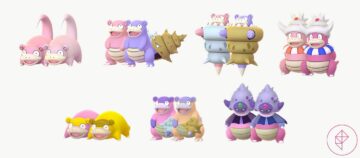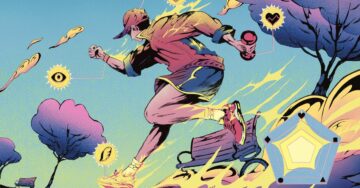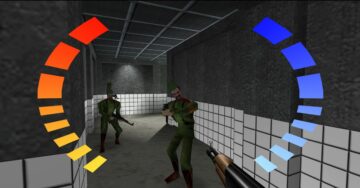
Be careful what I wish for. That’s the lesson of MLB The Show 21’s new Pinpoint Pitching system.
For all its flaws, I did enjoy the pitching controls of the Major League Baseball 2K series — the last MLB sim on an Xbox platform. MLB 2K13 and its predecessors required unique gestures on the right thumbstick to execute each pitch. Most baseball video games of that time used a three-stop pitching meter similar to the ones seen in golf video games, but the outcomes often felt arbitrary and detached from the user’s control, even when it seemed like I got the meter right.
After MLB 2K died, I called for SIE San Diego Studio to straight-up steal the ideas of its nominal rival. Eight years later, gesture-based controls finally come to MLB The Show 21 with a system that Sony San Diego calls Pinpoint Pitching. But it is a lot harder than its spiritual predecessor.
While Pinpoint Pitching has some evangelists, the general reaction seems to be that the system is too difficult. I had to go back to my Xbox 360 and boot up MLB 2K13 to pinpoint (see what I did there?) exactly what was bothering me about Sony San Diego’s approach, and I finally figured it out.
It’s the extra step the designers added to the process that is throwing me off the most.
A matter of timing
Pinpoint Pitching begins with the player targeting (and holding the left thumbstick over) the area they want to hit in the strike zone. The player then initiates the delivery by moving the right thumbstick directly down, up, left, or right (depending on the pitch) and immediately drawing a gesture (e.g., straight up for a fastball, or a half-circle for a curveball) that ends at the top of the stick area. A little map on the screen shows the path the player should try to trace. This is simple enough.
MLB The Show 21 has players immediately draw this pattern, then wait — sometimes several seconds — to execute a final step: drawing a straight line from the top of the circle to a target that is left or right of the bottom, which represents the x-axis of your pitching target. You’re supposed to trace the pattern, and hit that final target, right as the pitcher’s delivery animation arrives at its release point.
MLB 2K13’s pitching was easier to follow. Players had to be aware of a single thing on the screen that told them everything they needed to know.
As in MLB The Show 21, players started the delivery by pulling down (and only down, though) on the right thumbstick. But then they waited there for a little bit, before drawing the gesture. Ideal timing was represented by a yellow circle that slowly filled up to the edges of the circular pitching interface. When the player completed the gesture, the pitch was thrown.
The idea was to complete that gesture right as the inner circle met the outer one. Finish the gesture too soon, and the pitch arrives higher than intended. Complete it too late, and it goes lower. Really biffing the timing or the gesture leads to a wild pitch. The pitch’s lateral accuracy (left or right) is all handled by the CPU, after judging the overall effectiveness of the player’s input. Your eyes didn’t have to be in two places at once, and there was still room for surprises even if you think you did everything well.
MLB The Show’s version is a major downgrade. The system also messes with timing: When runners are on base, a pitcher moves into his “stretch” delivery, which gives you less time to make the gesture. This is the case in MLB 2K13, too. But because MLB The Show 21 has you draw the pattern immediately, and before the final timing and targeting move, you have less time to perform the longest step in the process.
Many relief pitchers (and some starters) pitch exclusively from the stretch. When I realized I had built a Road to the Show player who did exactly that, I quit the game, went back to the player customization menus, and gave him a longer windup. If you really want a generous window, give your guy an old-timer’s delivery, like Walter Johnson’s or Christy Mathewson’s from more than a century ago.
I understand why MLB The Show 21’s makers would try for something like Pinpoint Pitching, now the fourth pitching control option that the developers have introduced. Gesture-based pitching is like driving a sports car with a stick shift: It’s much more fun for enthusiasts, because you’re more involved.
But for now, only a masochist would try Pinpoint Pitching. I get that some players are already very good at it, frequently landing pitches with perfect timing and accuracy. Good for them. There are also people who can 100% “Through the Fire and Flames” in Guitar Hero 3.
The good news is that Sony San Diego always preserves existing controls and options as it introduces new ones. If you have become so skilled at your preferred method that you want a new challenge, I’d still recommend trying one of the three legacy sets, because Pinpoint Pitching is too frustrating, with multiple steps to follow, and multiple reminders saying you’re doing it all wrong.
- animation
- AREA
- Baseball
- Bit
- car
- challenge
- Circle
- content
- delivery
- developers
- DID
- driving
- ends
- Finally
- Fire
- flaws
- follow
- fun
- game
- Games
- General
- good
- HTTPS
- idea
- involved
- IT
- Line
- major
- map
- MLB
- move
- moves
- news
- Option
- Options
- Pattern
- People
- pitching
- platform
- player
- pulling
- relief
- San
- San Diego
- Screen
- Series
- shift
- SIM
- Simple
- So
- Sony
- Sports
- started
- starters
- system
- Target
- time
- top
- Video
- video games
- wait
- WHO
- xbox
- years
- youtube










